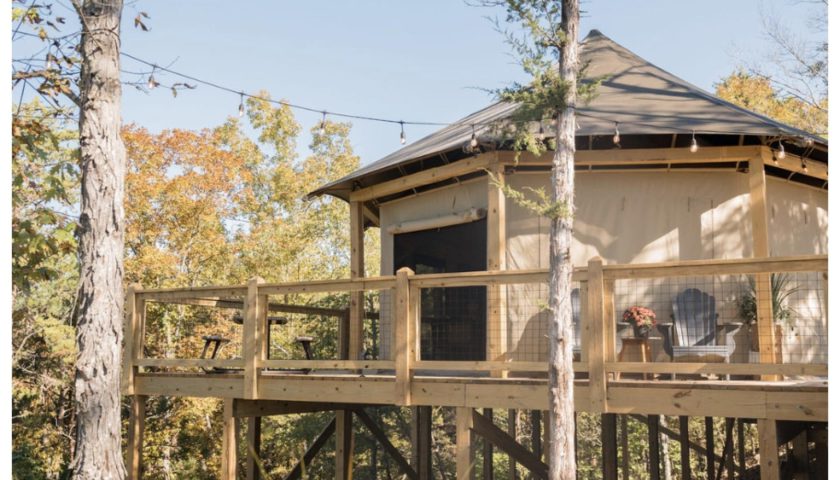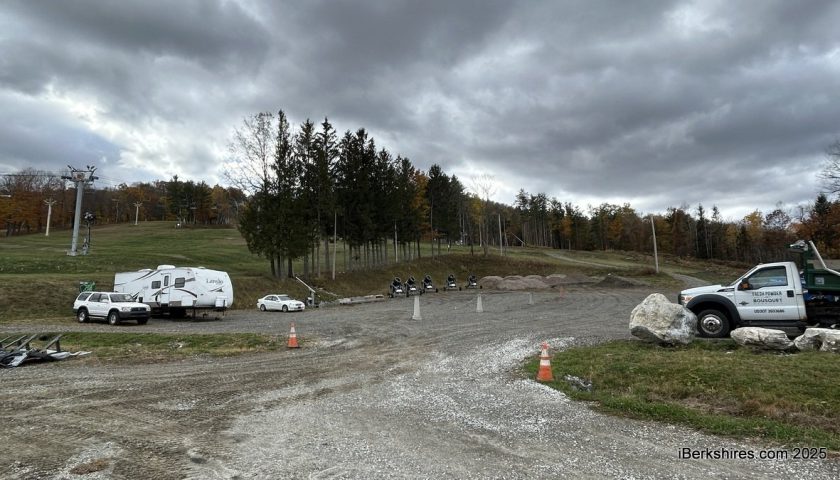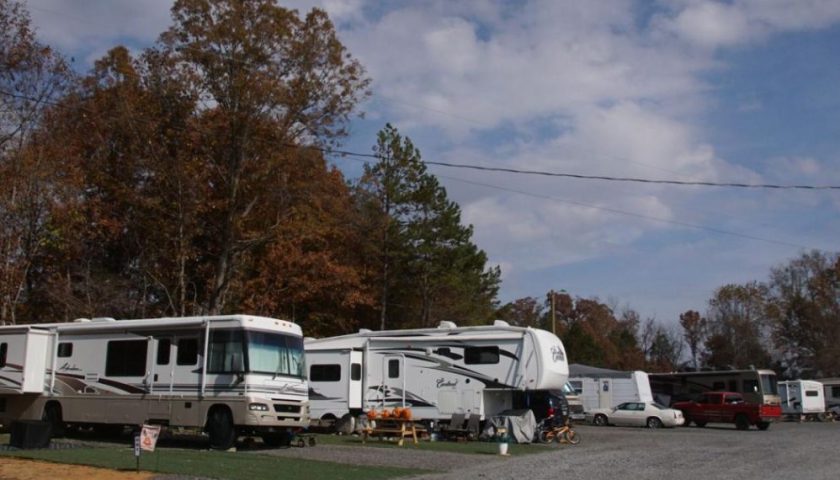
A development designed as an opportunity to enjoy Tahoe’s great outdoors requires the removal of 300 hundred towering pine trees on nine acres of privately owned land in Douglas County near the Lake Tahoe shoreline, as well as on U.S. Forest Service land slated to provide access to the property, which is just off congested Highway 50.
The 53-unit development is planned for year-round camping without the gear, but with the amenities of a luxury resort. Talaz, as it’s known, is intended to create “a positive impact through nature-based hospitality,” according to its website. It’s equipped with air conditioning, running water, and electric vehicle charging stations.
“Camping is evolving,” Julie Regan, executive director of the Tahoe Regional Planning Agency, said of the project at a meeting in late September. “How people experience the great outdoors is evolving.”
But enjoying the great outdoors should not require the removal of healthy trees, say critics.
The TRPA, which is made up of representatives from Nevada and California, approved the proposal, with only two members against it – both of them from California.
“It is a substantial amount of tree removal,” observed TRPA Governing Board member Ashley Conrad-Saydah, who serves as California Gov. Gavin Newsom’s appointee on the board. Conrad-Saydah noted the planned removal of trees from 58% of the site “is nothing to just sniff at.” She asked that the removal plan focus “first on the dead and dying trees” that create a fire hazard.
TRPA’s approval process, which involves a checklist, rather than an environmental impact study, determined the removal of the trees “will have no significant impact” on the environment.
The finding “proves yet again (TRPA) does not know how to assess environmental impact,” civil and environmental engineer Alan Miller said during public comment. “Almost 300 trees, and all will be cut, and there’s no significant effect from that.”
Miller noted that at the same meeting, the TRPA approved a fine of $20,000 against a homeowner who cut down two trees of 14-inch or greater diameter without approval, a violation of TRPA rules, and mandated the resident plant four trees in their place.
The Tahoe basin is already enduring the effects of climate change, which is worsened by the removal of trees, experts say. Warmer temperatures inhibit the mixing process responsible for the lake’s clarity, an attraction that helps lure millions of tourists a year.
Rachel Bowers, the developer of the project, told the TRPA she intends to “reforest in a more healthy manner,” and contends “the Jeffrey Pines are somewhat of an invasive species, and it’s actually hurting the health of the forest in Tahoe.”
Experts, however, note that Jeffrey Pines are the most common tree in the Tahoe Basin and are native to the area.
Roughing it?
“This is really a kind of a next generation response to camping,” Lew Feldman, an attorney representing the developer, said of the glamping trend. “You can now camp without gearing up.’”
Feldman noted his client is paying development mitigation fees of more than $275,000 to TRPA “for a pretty low impact undertaking.”
The nine-acre property was initially zoned for a single-family home, but its use as a campground “offers a greater public benefit and access to recreation than the previously approved residential use, and other potential uses of private property,” says the TRPA’s findings in support of approval. It also allows “more visitors to camp near Lake Tahoe…”
Residents argue the last thing Tahoe needs is more tourists, and suggest the development resembles a hotel more than a campground.
“I can see why some people are making the arguments that this is a hotel versus a campground,” said Vince Hoenigman, also an appointee of Newsom.
“TRPA should not be approving more of these massive projects without environmental analysis, at the very least,” Tahoe resident Dr. Staci Baker told the Current.
But TRPA’s Regan said the Tahoe Basin isn’t anywhere near its capacity for development.
“We adopted an update of our regional plan in 2012. We’re 13 years in, and we are still under the development caps that were set forth in that plan. We’re not even close to where we thought,” Regan said of the TRPA’s development projections.
California Senate Rules Committee Appointee Alexandra Leumer, who voted against the proposal, said she’d “love to see access to people that generally can’t afford to come to Tahoe.”
She asked staff “to revisit how we’re defining camping.”
Glamping, Leurner observed, “is beginning to get us into a gray area. I’m not feeling like this is even accomplishing some of the goals that I would like to see us prioritizing with camping.”
Conrad-Saydah of California said she wanted “a sense of what a stay at this place would cost, If we’re not actually increasing accessibility for people in middle or lower income ranges, we’re just sort of forcing folks into casinos or lower priced hotels and motels around the lake, instead of giving them this access to nature,” she said. “I think that’s a really critical thing to understand. Who is this development serving?”



